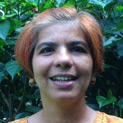As the time to unveil the post-2015 Sustainable Development Goals (2015) is drawing closer, scientists are adding their voices to the various state, public, and private entities focused on how to achieve these goals. As I am called upon to contribute to these debates, my mind goes to a few events I attended as part of my research on the links between economic development, environmental conservation, and local communities.
The first one was in Lima, Peru—the site of the the most recent COP—in May 2010, where hundreds of activists and academics had gathered to discuss the various crises–economic, political, social and environmental—within which we find ourselves, and to envision possible alternatives models of development. The encounter began and ended with several rituals to celebrate and honor the richness of nature, and to highlight how humans are deeply connected to, depend on and are sustained by the Earth’s bounty. Participants included a rainbow collection of peasants, rural women, indigenous peoples, and gay and lesbian groups.
It also included panels, workshops, and exhibits to the problems and destruction caused by mining and deforestation. At the same time, they called attention to the need for development in terms of schools, land reform, health care, and housing, and democracy in terms of equal rights, political accountability, and civic participation for all Peruvians in a country that was struggling to deal with its violent and repressive past.
A few weeks later, in June 2010, there was a celebration of the environment in Bogotá, Colombia. The celebration, in honor of International Year of Biodiversity, was sponsored by a wide variety of entities including the World Bank, the European Union, various Colombian government and non-government agencies, universities, and private companies.
The connections between the Earth and humans were also highlighted and celebrated at this event through various activities spread over the three days. These included presentations by national and international scholars, performance by well-known musicians and popular rock bands, and numerous exhibits on development and conservation projects.
The largest and most attractive booths were those of oil and mining companies. The displays in these booths highlighted how their activities led to sustainable economic growth, and benefit the nation, the world and also local groups including ethnic communities in the areas where these companies operate. That is, mining activities were portrayed as the vehicles through which communities would receive development in terms of roads, schools, housing and healthcare.
While the above two events were different in their aim and format, participants at both invoked “sustainable development” as the solution to the central problems of the 21st century. At the fair in Bogotá, the path to sustainable development was understood largely in terms of science, technology, and modernization with an emphasis on economic globalization through free trade and markets. These precise formulations had been called into question at the Lima meeting, where participants called attention to the uneven effects of mining and other resource-extraction based economic activities.
Many scientists and development projects, including the ones I am involved with at CIFOR (SLANT; Forests, Food Security and Nutrition; Landscapes), are focused on integrating these different approaches to achieving sustainable development. These technical and policy-oriented approaches are necessary, but are they sufficient to achieve sustainable development? I am not sure. What I am sure is that doing science means asking difficult questions about our complex realities.
In this case it means critically interrogating the romance and rhetoric associated with sustainable development and understanding them in the context of politics and history. Only then can we assess whether our methods and techniques are adequate to the principle challenge of our age – meeting the SDGs.
Editor’s note: This blog post originally appeared on the website of the CGIAR.
We want you to share Forests News content, which is licensed under Creative Commons Attribution-NonCommercial-ShareAlike 4.0 International (CC BY-NC-SA 4.0). This means you are free to redistribute our material for non-commercial purposes. All we ask is that you give Forests News appropriate credit and link to the original Forests News content, indicate if changes were made, and distribute your contributions under the same Creative Commons license. You must notify Forests News if you repost, reprint or reuse our materials by contacting forestsnews@cifor-icraf.org.














